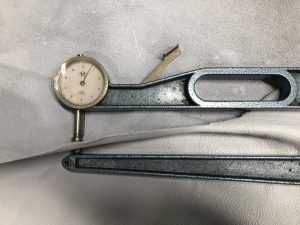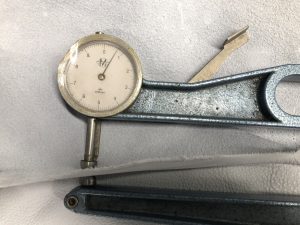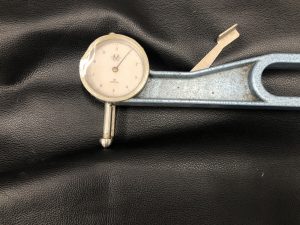What Is The Thickness Of Leather Skins?

Thickness Gauge
The thickness of a leather hide is what is achieved in the tannery, skins can be split into sections to gain the desired thickness required for the industry its being used in
Cow hides are extremely thick and can be around 45mm in thickness, so these are split into two layers upper split and a lower split, the lower split is mainly used fort suede leather. The hide before splitting is almost impossible to be used in any industry so must be made thinner so it can be used.

Measuring Leather Skins
Depending on the animal the hide comes from will also determine the thickness, the thickness of skins are regulated by industry standards as skins vary all over and a guaranteed thickness reading can’t be given as uniform as skins are soft and pliable and can made thinner by machines pressing against them trying to read the thickness.

Thickness Of A Crust Leather
Automotive leathers are around 1.0mm to as high as 1.6mm in thickness whereas fashion items like leather jackets can be as low as .80mm in thickness, items like motorcycle clothing can be around 1.5mm in thickness.
Any coating that is applied to the leathers surface must not be more than 1.5mm either, if it does exceed this it can’t be called leather according to the industry national and international standards.
These two pictures below show you the thickness differences of a Veg Tanned Leather used in the fashion industry for handbags compared to Pigmented Leather used in the automotive industry.

Vegetable Tanned Leather Thickness
This black skin being measured is a pigmented leather hide used in the automotive and furniture trade.

Pigmented Leather Thickness